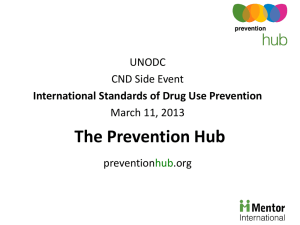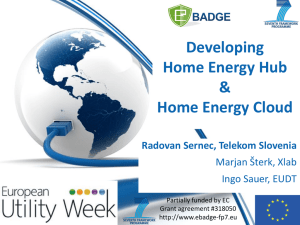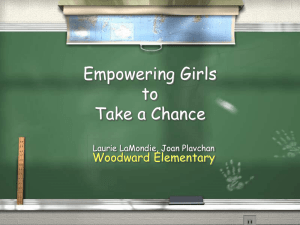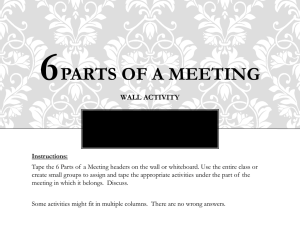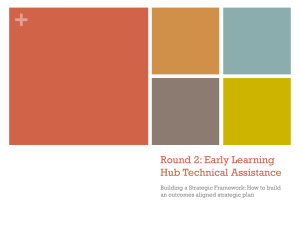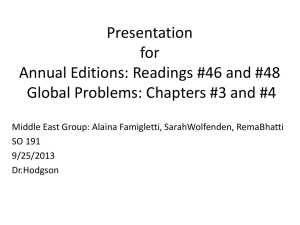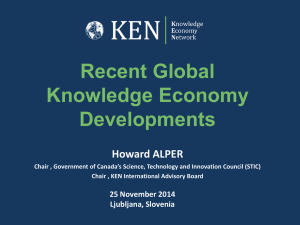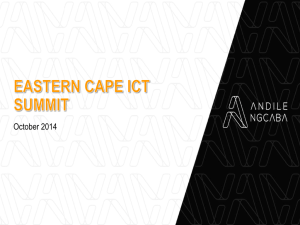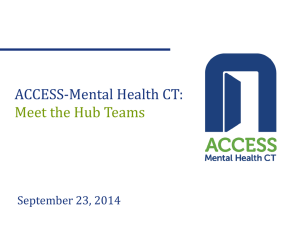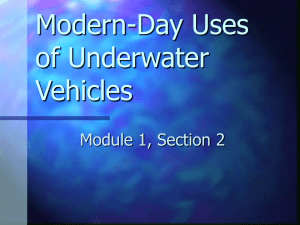Waterbotics LEGO
advertisement
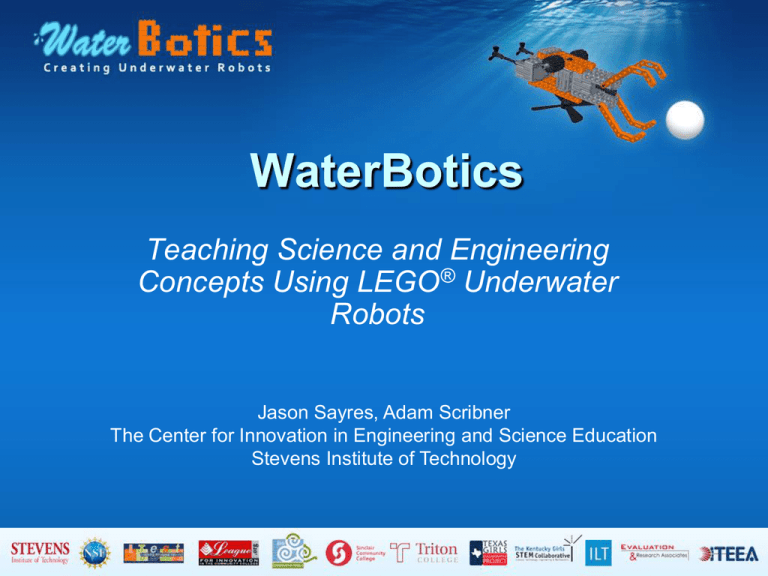
WaterBotics Teaching Science and Engineering Concepts Using LEGO® Underwater Robots Jason Sayres, Adam Scribner The Center for Innovation in Engineering and Science Education Stevens Institute of Technology What is WaterBotics? • LEGOTM MINDSTORMS robotics in underwater environment • Approximately 20-hour curriculum aimed at middle and high school classes as well as summer camps and after-school activities • Primarily funded by NSF Innovative Technology Experiences for Students and Teachers (ITEST) Program – Award #0929674: Build IT Underwater Robotics Scale-Up for STEM Learning and Workforce Development (BISU) Partners • Stevens Institute of Technology – Center for Innovation in Engineering and Science Education (CIESE) – Development of curriculum – Primary training and support • League for Innovation in the Community College – Selection and support of community college partners to target formal educational environments (i.e. schools) – Year one selection: Sinclair Community College • National Girls Collaborative Project (NGCP) – Selection and support of informal education programs, especially those aiming to engage girls – Year one selection: Texas Girls Collaborative Project • International Technology and Engineering Education Association (ITEEA) – Development and dissemination of a hybrid professional development program built around WaterBotics curriculum Why Underwater Robotics? • Presents unique, complex design challenges (e.g., buoyancy, control in 3-D) • Exposure to concepts like propulsion, drag, buoyancy and stability, gearing, torque, speed, and thrust • Awareness of careers that involve the types of skills developed in the project Why LEGOs? • • • • Familiarity (in some cases) Ease of use and durability Variety of pieces Rapid prototyping, testing, redesign – “Tweak friendly” • Fewer components required to create startup kit Project Challenge Using LEGO and related components, create an underwater ROV (remotely operated vehicle) that will be able to pick up weighted wiffle balls and deposit them in a bin. Task 1 – Straight Line Challenge • Use a single motor to build a vehicle that can travel the diameter of the pool on the surface as quickly as possible. • Optimize gearing to achieve best propeller speed. Task 2 – Figure Eight Challenge • Use a second motor to enable steering. • Maneuver on surface to complete a slalom course around two buoys in shortest time. Task 3 – Vertical Challenge • Use a third motor and other materials to control the vehicle's buoyancy in order to descend and rise vertically in water. • Maneuver through the same slalom course as in the previous challenge, except this time underwater. Task 4 – Final Challenge • Produce a vehicle which can retrieve the greatest number of objects from the bottom of the pool within a specified period. • Objects must be deposited in bins at various depths in the water to score points. • A fourth motor may be used to come up with some way to grab and release the balls. The NXT and Programming Key Concepts, Skills Buoyancy Stability Newton’s Laws Propulsion Gear Ratios Inertia Forces Torque Volume Density Programming Troubleshooting Iterative Design Team Building Research: Study 1 Professional Development Fidelity • Is the program delivered with equal fidelity in different environments? • If not, what are the differences between trainers and also between formal and informal teachers/staff and what accounts for them? • If the curriculum is altered, what is altered and why? • Are there critical components of either the PD or the curriculum without which the intended outcomes cannot be achieved? Research: Study 2 Student Impact • Is the curriculum as effective in a wider range of settings as in the setting in which it was originally tested? • Are student outcomes similar regardless of the teaching environment (formal vs. informal)? • If they differ, what are the differences and what accounts for them? Research: Study 3 Scale-Up and Sustainability • To what extent does/did each hub partner implement the Build IT model? • What is the correlation between the levels of success of hub partners in meeting the project’s overarching goal and their fidelity to the BISU model? • What adaptations, adoptions, partnerships, and/or collaborations resulted from implementation of the project? Research: Study 3 Scale-Up and Sustainability (cont.) • To what extent did hub sites become self-sustaining by their fourth year in the project? • How and to what extent did hubs develop a local funding base? • What capacity-building activities occurred to enable project sustainability? • To what extent did hub sites scale up or expand the Build IT program? Training Model Current Hub Sites Formal Sites •Ohio – Sinclair Community College •Illinois – Triton College Informal Sites •Texas – Texas Girls Collaborative Project •Washington – Pacific Northwest Girls Collaborative Project •Kentucky – Kentucky Girls STEM Collaborative Hub Site Activities • Summer camp for students • Training institute for local educators Educator Support • Hub site staff – Visits to schools – Email and phone availability – Optional follow-up professional development • Website – Course management – Interactive FAQs – Curriculum updates • Optional Webcasts Training at ITEEA New, Hybrid Training Model • Previous trainings took up to two weeks • Hybrid consists of: • One intense, face-to-face session • 4 online sessions • Support in the form of extra materials, a discussion area, and live webcasts • Debuted on Wednesday this week • Another session next year Challenges • Pool setup and finding alternatives • Ensuring that educators will be able to handle technical issues • Fitting the project into a class • Finding an optimal room configuration • Costs of materials • Ensuring sustainability For More Information • Website: http://waterbotics.org Upcoming Training Sessions: http://waterbotics.org/training • Facebook: http://www.facebook.com/pages/WaterBotics/162559767125257 • YouTube: http://www.youtube.com/waterbotics • Email: Jason.Sayres@stevens.edu, Adam.Scribner@stevens.edu


